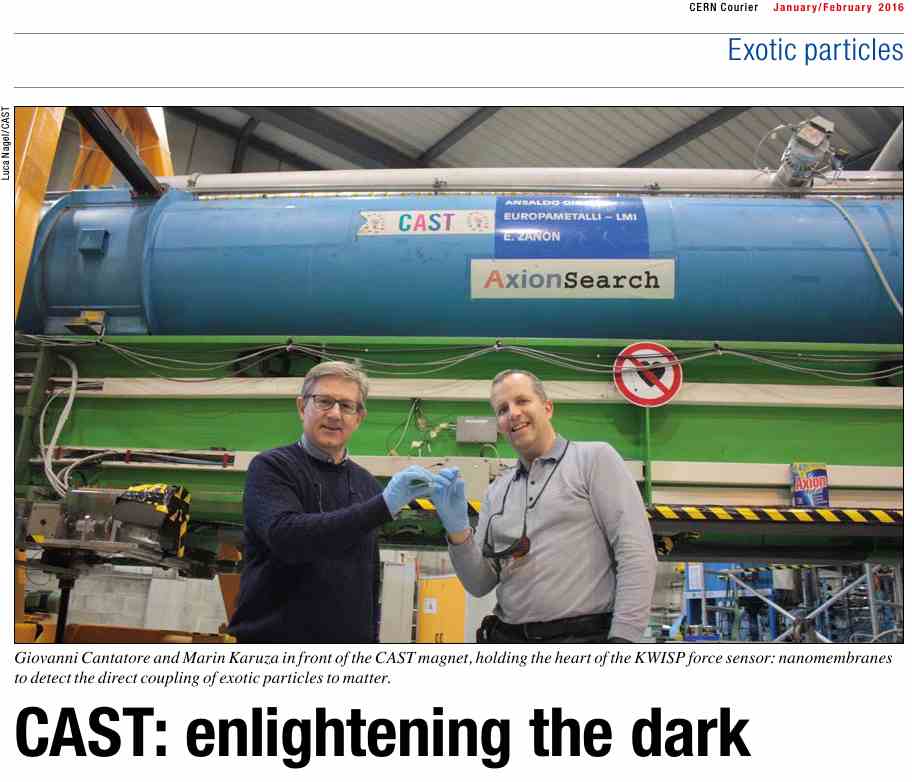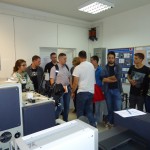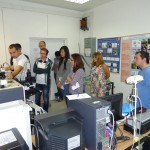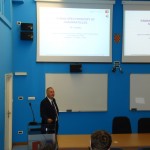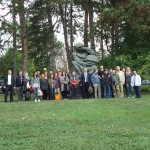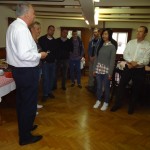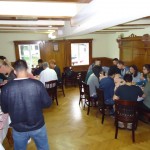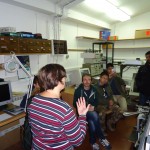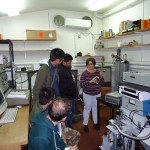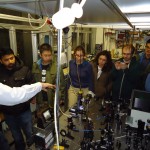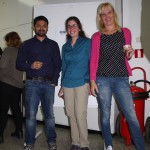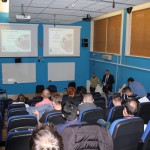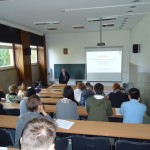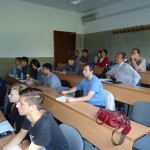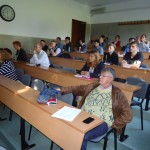Sorry, this entry is only available in Croatian. For the sake of viewer convenience, the content is shown below in the alternative language. You may click the link to switch the active language.
PRIOPĆENJE ZA JAVNOST – Zagreb, 7. lipnja 2016.
Otvoreno pismo ministru znanosti, obrazovanja i sporta Predragu Šustaru:
‘‘Opstruiranjem financiranja iz EU fondova hrvatskih znanstvenih centara izvrsnosti ugrožava se 50 milijuna eura iz strukturnih fondova i radna mjesta za hrvatske znanstvenike – traži se hitna reakcija ministra Šustara!‘‘
Pedeset milijuna eura, upitna radna mjesta za čak tri stotine doktoranada i postdoktoranada, te riskiranje penala od Europske komisije, samo su dio crne statistike koja ozbiljno prijeti Republici Hrvatskoj (RH), a odvija se u sjeni problema s kurikularnom reformom.
Deset znanstvenih centara izvrsnosti proglašenih od strane Ministarstva znanosti obrazovanje i sporta (MZOS) tijekom 2014. i 2015. godine na prijedlog Nacionalnog vijeća za znanost, visoko obrazovanje i tehnološki razvoj, posljednjih su nekoliko mjeseci postalo taocem MZOS-a.
Naime, RH se strateški odredila kroz Operativni program (OP) za financiranje Znanstvenih centara izvrsnosti (2014 – 2020), te se prema Operativnom programu očekuje 50 milijuna eura iz Europskog fonda za regionalni razvoj (ERDF) koji bi bili na raspolaganju proglašenim centrima.
Kako bi centri mogli iskoristiti europska sredstva, MZOS je obvezan raspisati natječaj. Prvi indikativni rok za raspisivanje natječaja bio je 31. ožujka, te je pomaknut na 1. lipnja 2016., a natječaj još nije raspisan.
Unatoč brojnim službenim molbama za poštivanjem obveza koje su voditelji Znanstvenih centara izvrsnosti posljednjih mjeseci dostavili ministru Šustaru i premijeru Oreškoviću s upozorenjem da je RH preuzela obvezu te je dužna raspisati planirani natječaj iz strukturnih fondova u sklopu kojih bi se izvršila evaluacija planiranih troškova u okviru pojedinih centara, s današnjim datumom MZOS još uvijek nije aktivirao natječaj Europskog fonda za regionalni razvoj (ERDF) koji bi omogućio povlačenje čak 50 milijuna eura za Znanstvene centre izvrsnosti. Time se ozbiljno ugrožava realizacija znanstvenih aktivnosti proglašenih ZCI-a i gubitak 50 milijuna eura iz EU te zapošljavanje 300 mladih stručnjaka.
Podsjetimo, MZOS je proglasio Znanstvene centre izvrsnosti iz područja prirodnih, biomedicinskih, biotehničkih i tehničkih znanosti nakon zahtjevnih kriterija javnog natječaja, uključujući opsežne domaće i međunarodne recenzije i intervjue s voditeljima predloženih centara koji su proveli Agencija za znanost i visoko obrazovanje (AZVO) i Nacionalno vijeće za znanost, visoko obrazovanje i tehnološki razvoj. MZOS je potom temeljem članka 29. stavka 2. Zakona o znanstvenoj djelatnosti i visokom obrazovanju (Narodne novine, broj: 123/2003, 105/2004, 174/2004, 2/2007 – Odluka Ustavnog suda Republike Hrvatske, 46/2007, 45/2009,63/2011,94/2013, 139/13 i 101/2014 – Odluka i Rješenje Ustavnog suda Republike Hrvatske) proglasilo znanstvene centre izvrsnosti RH, čiji su članovi izvrsni hrvatski znanstvenici, među nositeljima međunarodne prepoznatljivosti hrvatske znanosti.
Proces prijave, vrednovanja i odabira centara trajao je tri godine, a Vlada RH je nakon provedenog postupka recenzija uskladila program centara s nacionalnim prioritetima i oni su u skladu sa Strategijom pametne specijalizacije (S3). Ovu Strategiju su više od dvije godine izrađivali brojni eksperti iz javnog i privatnog sektora koji se bave istraživanjem i razvojem, te ju je usvojio Hrvatski sabor i Europska komisija za znanost.
Cilj proglašenja centara je bio omogućiti izvrsnim hrvatskim znanstvenicima i institucijama uvjete za vrhunski istraživački rad kroz stabilno i pojačano financiranje te edukaciju mladih znanstvenika i značajan doprinos gospodarstvu RH.
Slijedom navedenog, proizlazi da se nepoštivanjem zadanih obveza od strane MZOS-a te neprovođenjem preuzetih obveza direktno ugrožavaju nacionalni interesi.
Nažalost, jedan od glavnih protivnika ustroja hrvatskih centara izvrsnosti, kao i od strane Europske komisije usvojene pametne specijalizacije (S3) RH, a koja je jedan od glavnih preduvjeta za povlačenje sredstava iz strukturnih fondova, je pomoćnik ministra za znanost dr. sc. Krešimir Zadro.
Poštovani ministre Šustar, otvorenim pismom javnosti obraćamo Vam se ispred svih Znanstvenih centara izvrsnosti (ZCI) iz područja prirodnih, biomedicinskih, biotehničkih i tehničkih znanosti sa zahtjevom da se javno očitujete o razlozima nepoštivanja odluka Vlade RH i neprovođenju usvojenih programa financiranja hrvatskih centara izvrsnosti iz EU fondova te datumu raspisivanja natječaja kako bi se izbjegao crni scenarij.
Vjerujemo da niste spremni potpuno ignorirati izvrsne hrvatske znanstvene skupine i propustiti priliku da se kroz usvojeni program pametne specijalizacije povuku sredstva u iznosu od 50 milijuna eura iz strukturnih fondova.
U situaciji kad se domaća sredstva za znanost i istraživanje sustavno režu, kad se događa egzodus najboljih mladih obrazovanih stručnjaka, znanstvena istraživanja i inovacije preživljavaju velikim dijelom zbog izvrsnosti istraživačkih skupina i velikih napora znanstvenika u povlačenju sredstva iz programa Europske unije, ovakvo opstruiranje rada Znanstvenih centara izvrsnosti da osiguraju europska sredstva za rad i zapošljavanje stručnog kadra je nedopustivo!
S poštovanjem,
voditelji proglašenih Znanstvenih centara izvrsnosti (STEM područja):
Znanstveni centar izvrsnosti za napredne materijale i senzore,
Institut Ruđer Bošković i Institut za fiziku, Zagreb
Znanstveni centar izvrsnosti za reproduktivnu i regenerativnu medicinu,
Znanstveni centar izvrsnosti za virusnu imunologiju i cjepiva,
Medicinski fakultet, Sveučilište u Rijeci
Prof. dr. sc. Stipan Jonjić – stipan.jonjic@medri.uniri.hr
Znanstveni centar izvrsnosti za znanost i tehnologiju – STIM, Sveučilište u Splitu
Prof. dr. dr. h.c. Vlasta Bonačić-Koutecky – vbk@cms.hu-berlin.de
Znanstveni centar izvrsnosti za bioraznolikost i molekularno oplemenjivanje bilja, Agronomski fakultet , Sveučilište u Zagrebu
Prof. dr. sc. Zlatko Šatović – zsatovic@agr.hr
Znanstveni centar izvrsnosti za bioprospecting mora
Institut Ruđer Bošković, Zagreb
Dr.sc. Rozelindra Čož-Rakovac –
Rozelindra.Coz-Rakovac@irb.hr
Znanstveni centar izvrsnosti za kvantne i kompleksne sustave te reprezentacije Liejevih algebri, Prirodoslovno-matematički fakultet, Sveučilište u Zagrebu
Znanstveni centar izvrsnosti za personaliziranu brigu o zdravlju,
Znanstveni centar izvrsnosti za temeljnu, kliničku i translacijsku neuroznanost, Medicinski fakultet, Sveučilište u Zagrebu
Prof. dr. sc. Miloš Judaš – mjudas@hiim.hr
Znanstveni centar izvrsnosti za znanost o podatcima i kooperativne sustave, Fakultet elektrotehnike i računarstva, Sveučilište u Zagrebu
Priopćenje voditelja proglašenih
Znanstvenih centara izvrsnosti (STEM područja) ___________________________________________________________________________________________________

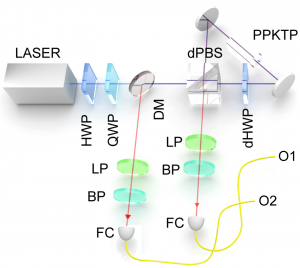
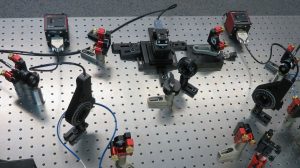

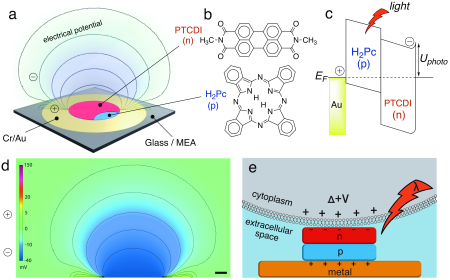
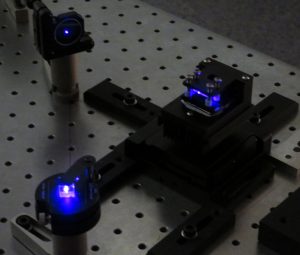

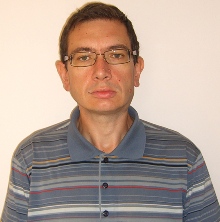
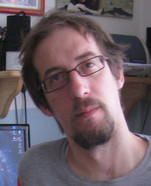 Pozivamo Vas na predavanje dr.sc. Nikole Biliškova naslova “Kemijska pohrana vodika u kondenziranoj materiji” u srijedu 9.11.2016. u 14 sati u predavaonici I krila IRB-a.
Pozivamo Vas na predavanje dr.sc. Nikole Biliškova naslova “Kemijska pohrana vodika u kondenziranoj materiji” u srijedu 9.11.2016. u 14 sati u predavaonici I krila IRB-a.